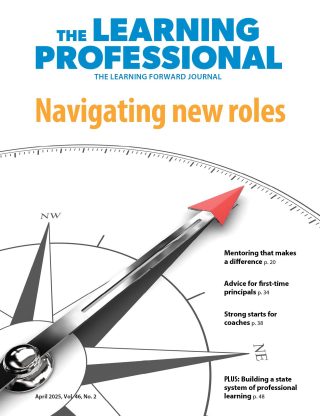FEATURE ARTICLE
15 Minutes to a Transformed Lesson
A Conversation Focused on Content Clarifies Teaching Objectives
By Learning Forward
August 2013
Read the remaining content with membership access. Join or log in below to continue.
Sed ut perspiciatis unde omnis iste natus error sit voluptatem accusantium doloremque laudantium, totam rem aperiam, eaque ipsa quae ab illo inventore veritatis et quasi architecto beatae vitae dicta sunt explicabo. Nemo enim ipsam voluptatem quia voluptas sit aspernatur aut odit aut fugit, sed quia consequuntur magni dolores eos qui ratione voluptatem sequi nesciunt. Neque porro quisquam est, qui dolorem ipsum quia dolor sit amet, consectetur, adipisci velit, sed quia non numquam eius modi tempora incidunt ut labore et dolore magnam aliquam quaerat voluptatem.
Watch a content planning conference take place with science teachers who are members of a common planning time team.
www.rbteach.com
Revised Lesson Plan on the Human Respiratory System
Students will be able to:
- Describe the mechanism by which oxygen enters the body and the pathway it follows.
- Explain the magic moment when oxygen crosses cell membranes (the alveoli) into capillaries and thus enters the transportation system of the bloodstream/circulatory system.
- Explain the process by which oxygen does its work in the body.
- Explain what and how the respiratory system expels items the body needs to get rid of (carbon dioxide and water).
Big ideas:
- Every cell in the body needs oxygen, not just muscles. That includes bone marrow, hair, everything.
- When oxygen arrives at a cell, the chemical reaction within the cell of the oxygen with glucose releases energy. So oxygen is absolutely necessary for all cells to grow, muscles to move, etc.
- The bloodstream is the highway that carries oxygen to the cells.
- We also have to get rid of the carbon dioxide that is the product of this release of energy. If we didn’t, we’d die. The respiratory system is taking care of this “get rid of the stuff” function as well as the delivery of oxygen to do its work.
- Respiration is a process, and it’s a lot more than what we call “breathing.”
- Respiration is a process for getting oxygen into the body so the oxygen can do its work.
How to Have a Content Planning Conversation


References
West, L. & Staub, F.C. (2003). Content-focused coaching: Transforming mathematics lessons. Portsmouth, NH: Heinemann.
Learning Forward is the only professional association devoted exclusively to those who work in educator professional development. We help our members plan, implement, and measure high-quality professional learning so they can achieve success with their systems, schools, and students.
Recent Issues
LEARNING DESIGNS
February 2025
How we learn influences what we learn. This issue shares essential...
BUILDING BRIDGES
December 2024
Students benefit when educators bridge the continuum of professional...
CURRICULUM-BASED PROFESSIONAL LEARNING
October 2024
High-quality curriculum requires skilled educators to put it into...
LEARNING TO PIVOT
August 2024
Sometimes new information and situations call for major change. This issue...













